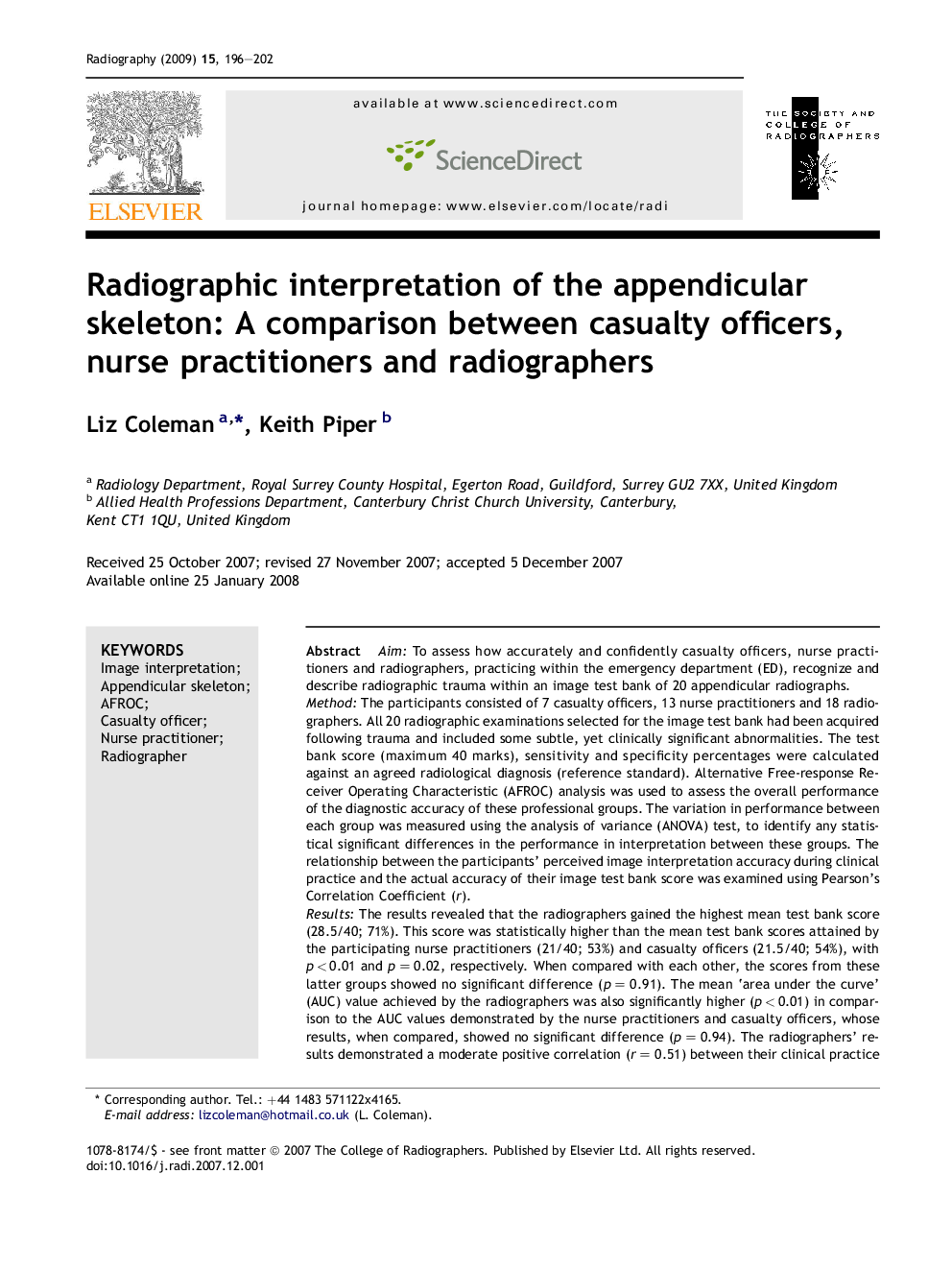| Article ID | Journal | Published Year | Pages | File Type |
|---|---|---|---|---|
| 2735028 | Radiography | 2009 | 7 Pages |
AimTo assess how accurately and confidently casualty officers, nurse practitioners and radiographers, practicing within the emergency department (ED), recognize and describe radiographic trauma within an image test bank of 20 appendicular radiographs.MethodThe participants consisted of 7 casualty officers, 13 nurse practitioners and 18 radiographers. All 20 radiographic examinations selected for the image test bank had been acquired following trauma and included some subtle, yet clinically significant abnormalities. The test bank score (maximum 40 marks), sensitivity and specificity percentages were calculated against an agreed radiological diagnosis (reference standard). Alternative Free-response Receiver Operating Characteristic (AFROC) analysis was used to assess the overall performance of the diagnostic accuracy of these professional groups. The variation in performance between each group was measured using the analysis of variance (ANOVA) test, to identify any statistical significant differences in the performance in interpretation between these groups. The relationship between the participants' perceived image interpretation accuracy during clinical practice and the actual accuracy of their image test bank score was examined using Pearson's Correlation Coefficient (r).ResultsThe results revealed that the radiographers gained the highest mean test bank score (28.5/40; 71%). This score was statistically higher than the mean test bank scores attained by the participating nurse practitioners (21/40; 53%) and casualty officers (21.5/40; 54%), with p < 0.01 and p = 0.02, respectively. When compared with each other, the scores from these latter groups showed no significant difference (p = 0.91). The mean ‘area under the curve’ (AUC) value achieved by the radiographers was also significantly higher (p < 0.01) in comparison to the AUC values demonstrated by the nurse practitioners and casualty officers, whose results, when compared, showed no significant difference (p = 0.94). The radiographers' results demonstrated a moderate positive correlation (r = 0.51) between their clinical practice estimations and their actual image test bank scores (p = 0.02); however, no significant correlation was found for the nurse practitioners (r = 0.41, p = 0.16) or casualty officers (r = 0.07, p = 0.87).ConclusionThe scores and values achieved by the radiographers were statistically higher than those demonstrated by the participating nurse practitioners and/or casualty officers. The results of this research suggest that radiographers have the ability to formally utilise their knowledge in image interpretation by providing the ED with a written comment (initial interpretation) to assist in the radiographic diagnosis and therefore replace the ambiguous ‘red dot’ system used to highlight abnormal radiographs.
